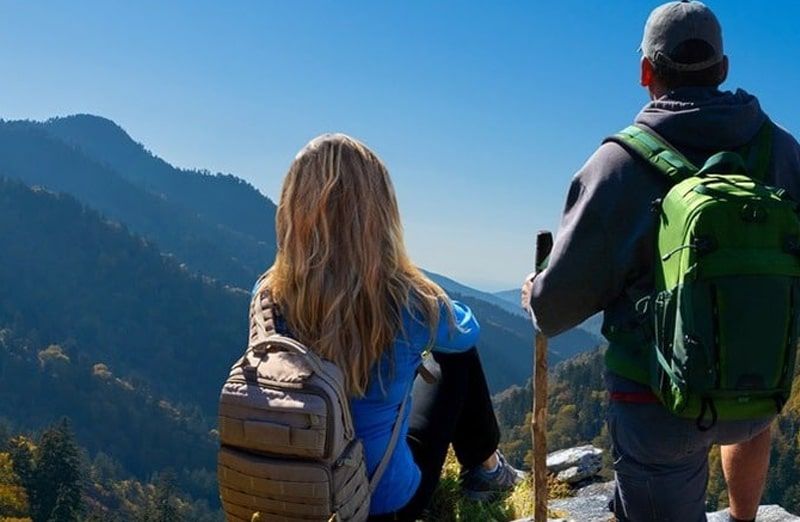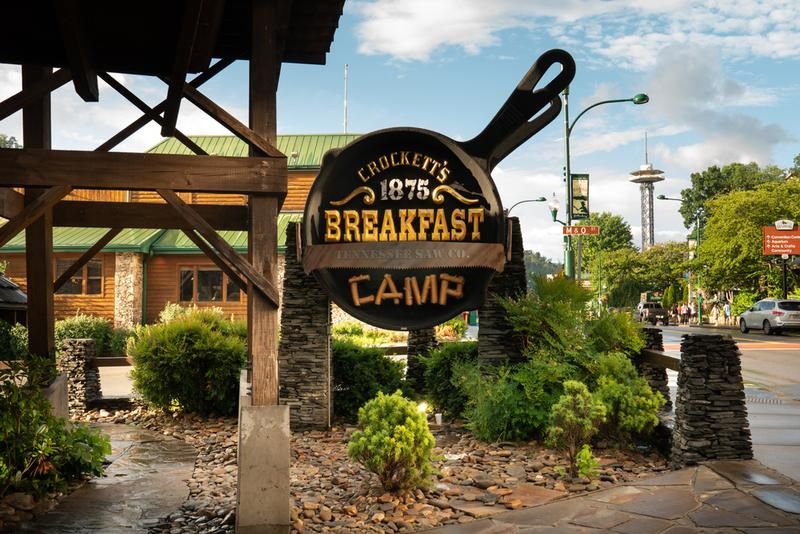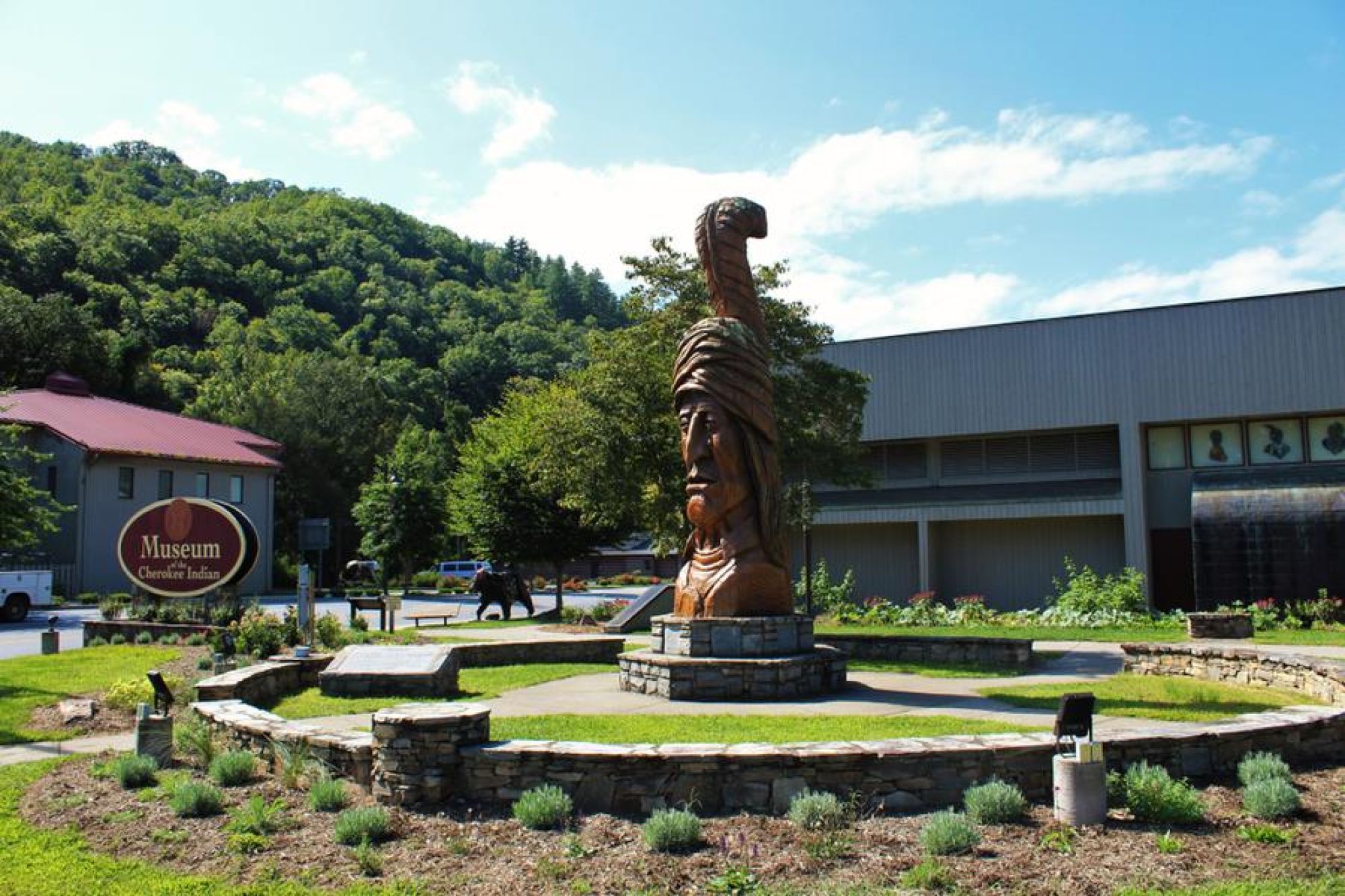
20 Things to Do in Great Smoky Mountains National Park
Great Smoky Mountains National Park ranks as America’s most-visited national park for good reason. The blue peaks, shrouded in their namesake mist, feature stunning natural beauty and some of the best outdoor recreation in the country. Even better, unlike most other national parks, you don’t need an entrance pass to visit — just a low-cost parking tag – recently implemented to avoid overcrowding.
A short drive from metropolitan areas like Asheville and Gatlinburg, the park offers countless opportunities for year-round fun. You can view vibrant autumn leaves in the fall, strap on cross-country skis during the winter, and raft down whitewater rivers in the spring and summer. Everyone, from families to solo travelers, honeymooners to thrill seekers, can enjoy activities they like to experience the park to its fullest.
To help you decide what to see and where to go, we’ve compiled a list of the top 20 things to do in this magnificent national forest while on a Prestige vacation home rental getaway. With several locations in the Gatlinburg area, guests will be positioned right at the north entrance to the national park.
Read on to learn about all the best activities in Great Smoky Mountains National Park, then book your stay today!
1. Hunt waterfalls
During the spring and summer, the park comes alive with rushing streams and hundreds of waterfalls. No two falls are alike — for example, hikers can marvel at the majestic Abrams Falls via the Abram Falls Trail or catch the vibrant greenery surrounding Grotto Falls via the Trillium Gap Trailhead. Cataract Falls, just a 10-minute drive from downtown, is a hidden gem that should be added to any Gatlinburg itinerary.
Bring a waterproof sleeve for your phone no matter which falls you visit so the spray doesn’t keep you from snagging pics!
2. Visit Cades Cove
Despite its name, this destination isn’t a water feature but a tranquil, green valley where some of the first European settlers planted their roots. You can tour Cades Cove from your car on an 11-mile driving loop, but short hiking trails like the Cades Cove Nature Trail will fully immerse you in the area’s wild beauty. While you explore, keep an eye out for wildlife like turkeys, black bears, and deer.
3. Climb Clingmans Dome
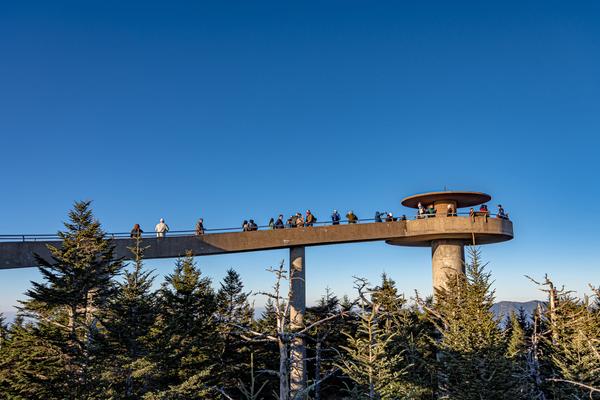
The highest point in Great Smoky Mountains National Park, Clingmans Dome will afford you some unforgettable views. On clear days, you may see up to seven states from the observation tower on top of the dome. Tourists flock to the striking viewpoint from spring to fall, when the road is open to car traffic, but if you hike in during winter, you could have this iconic landmark all to yourself.
4. Hike Mount LeConte
Reaching the four peaks of Mount LeConte, one of the largest mountains in the Smokies, requires some commitment. All of the hikes here clock in at ten or more miles roundtrip, but you’ll be rewarded with incredible sights along the way.
At Myrtle Point, you can catch the best sunrise in the Smokies, while Cliff Top will give you the best sunset. If you choose to hike up via the Trillium Gap Trail, you might see some unexpected furry friends: pack llamas, which bring provisions to the mountaintop LeConte Lodge.
5. Other Hikes in the Great Smoky Mountains National Park
The Great Smoky Mountains National Park boasts 150 trails in its half a million acres. Since you probably don’t have time to try all of them, we’re keeping things short and sweet by breaking down a few of the most iconic hikes.
Deep Creek Loop
This relaxed, family-friendly loop covers not one, not two, but three waterfalls, following the scenic Deep Creek uphill on a gentle incline. Bring a picnic lunch to dine by the creekside and watch for native wildlife, like gray foxes and whitetail deer. You can even fish for trout in those crystal-clear waters.
Charlie’s Bunion
The Appalachian Trail stretches from Georgia to Maine, with 72 miles in the national park’s boundaries. If that sounds daunting, don’t worry — you can still experience the AT as a day hike. Strap on your pack and lace up your boots to complete an eight-mile out-and-back hike from Newfound Gap to the Charlie’s Bunion overlook.
Mount Cammerer
Famous for its panoramic views and stone lookout tower, Mount Cammerer also falls on the AT called the Low Gap Trail. Three thousand feet of elevation gain and an 11-mile roundtrip make this one of the lengthier and tougher hikes in the park, but if you complete the steep climb, you can enjoy unobstructed views of the Pigeon River Gorge and, of course, the Smoky Mountains themselves.
6. Spend a day at Dollywood
Although Dollywood isn’t within the national park, it’s just a short drive away in Pigeon Forge, Tennessee. This theme park is founded and run by the Queen of Nashville herself, and you might even catch her there — she drops in for surprise visits and special events. Ride roller coasters and float through Splash Country, then wrap up the day with dinner and a show (we recommend Dolly Parton’s Stampede).
7. Peek into the past
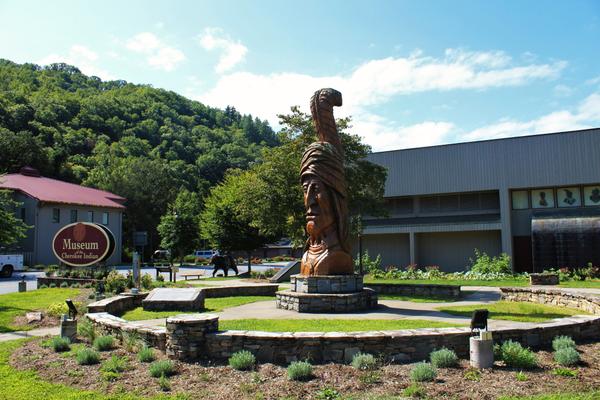
If you’re entering the park’s south side on Newfound Gap Road, you can’t miss the Oconaluftee Visitor Center. One of the park’s four visitor centers, Oconaluftee is home to the Mountain Farm Museum and half a mile from Mingus Mill, a water-powered gristmill built in the late 1800s.
On your way back out of the park, you’ll pass the Museum of the Cherokee Indian in the town of Cherokee, North Carolina. Here, you can learn more about the area’s complex history through the lens of its indigenous people.
8. Drive the Roaring Fork Motor Nature Trail
If hiking on foot isn’t your thing, you can tackle this particular trail from your car. Along this short loop drive, you’ll spot rushing mountain streams and a handful of buildings preserved from the early days of settlement, including gristmills and log cabins. If you want to stretch your legs after the drive, take the 5.4-mile hike to Rainbow Falls, one of the most photographed destinations in the park.
9. Walk along Fontana Dam
This gateway to the Great Smoky Mountains National Park forms a fascinating part of American history. The 480-foot-tall dam was constructed during World War II to produce electricity for aluminum manufacturing, and it still supplies power to local communities today. You can learn more at the small visitor center atop the dam, walk across the concrete structure, and watch decades of engineering at work.
10. Float on Fontana Lake
Besides providing electricity, the Fontana Dam had the added benefit of creating Fontana Lake, now a nearly 17-mile-long body of freshwater that forms part of the park’s southern border. Take a scenic drive two hours south of Gatlinburg and grab a kayak, canoe, or stand-up paddleboard at Nantahala Outdoors Center. Or, you can take a dip in those inviting emerald waters from the Fingerlake Day Use Area.
11. Ride horses
Visitors to Great Smoky Mountains National Park can participate in guided horseback rides starting from one of four stables: Cades Cove, Smokemont, Smoky Mountains, and Sugarlands. Rides start at $30 per hour. On horseback, you can soak up mountain views and learn some local history from your guides, who will escort you on your ride. Depending on which stable you pick, you’ll see different sides of the park, so read up on their routes and choose wisely.
12. Ride a zipline
Although no companies offer ziplining inside the park, adventurous types can still soar over the trees just outside for 360-degree views of the Appalachian Mountains. CLIMB Works in Gatlinburg will get you closest to the park itself, but several other nearby adventure companies, like Smoky Mountain Ziplines and Foxfire Adventure Park, provide plenty of zipline thrills with equally spectacular scenery.
13. Tube down Deep Creek
One of the most-visited spots in the park, Deep Creek draws thousands of tourists every year. The creek owes its popularity to shallow but fast-flowing waters perfect for inner tubing and swimming. You can rent inner tubes from companies up and down the creek, and once you have your tube in hand, hike upriver as far as you’d like before floating back down to Deep Creek Campground. Lather, rinse, and repeat until you get tired or the sun sinks below the horizon.
14. View the wildflowers
Some call the Smokies “Wildflower National Park” due to the year-round presence of colorful wildflowers. While picking flowers in the park is prohibited, you can admire them from afar on your hikes and snap photos for long-lasting memories. You’ll find beautiful blooms in meadows and balds all over the park, but don’t forget to look up, as trees like rhododendrons and dogwoods put on some of the best floral shows every year.
15. Raft a whitewater river
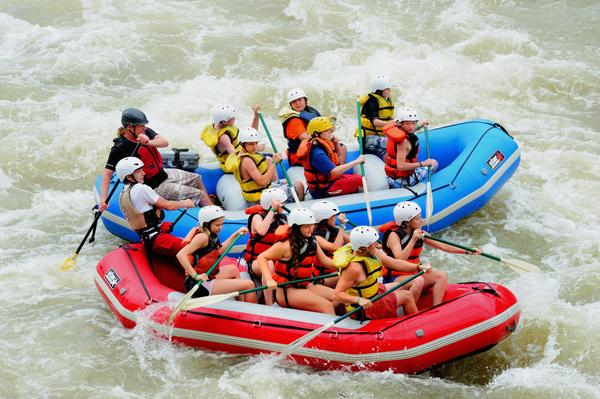
Amp up the adventure with a whitewater river rafting trip. You can choose from several exciting rivers that run near the park, like the Nantahala, Tuckaseegee, and the Pigeon Rivers. For guidance on the Nantahala, book a trip with Wildwater Rafting. Those looking to raft the Pigeon River can ride with Ober Gatlinburg or Raft Outdoor Adventures.
16. Pick berries on the Blue Ridge Parkway
Much like the wildflowers, you can’t pick fruit inside the national park. But you can head to the nearby Blue Ridge Parkway to partake in the area’s greatest summer bounty: blueberries.
Berry bushes thrive at Max Patch, Graveyard Fields (south of Asheville), and Black Balsam Knob. The harvest season peaks in mid to late August, so bring buckets for the whole family and be prepared to gorge yourself on delicious fruit.
17. Peep fall foliage
Leaf peepers, as they’re colloquially known, descend upon the Great Smoky Mountains every fall to catch a dazzling show when the famous mountain greenery transforms into shades of red and gold, bringing thousands of visitors to landmarks like Cades Cove and Clingmans Dome from October through November.
If you’re hoping to avoid the crowds, though, we have some good news — you can see jaw-dropping fall foliage at almost every park overlook. Stick to the less traveled roads, and you might just stumble across your private viewing area.
18. Spot elk in the Cataloochee Valley
Several historic buildings in the Cataloochee Valley, including an old chapel, have been preserved since the 1800s. But the area is better known for its abundant elk population, the largest in Great Smoky Mountains National Park. Once native, elk were reintroduced in the early 2000s and still roam the valley today.
19. Cross-country ski or snowshoe
Many roads in Great Smoky Mountains National Park close once winter arrives, but you can still explore on foot. Break out the skinny skis or snowshoes to create your own track and see a different side of the park sans all the warm-weather crowds. You can even set out to Clingmans Dome, where you may catch a gorgeous, wintry vista of the Smokies.
20. Snap some sunset shots
No trip to the Smoky Mountains would be complete without a sunset photo. Clingmans Dome provides great opportunities for sunset pics, as do Morton Overlook, Newfound Gap, and Cliff Top on Mount LeConte. But with so many incredible landscapes in the park, it’s hard to go wrong at any location.
Explore Great Smoky Mountains National Park
Great Smoky Mountains National Park features seemingly endless scenery, fun activities, and hidden gems waiting to be discovered. We can’t possibly cover everything here, though — to get the full picture, you’ll just have to come see the park’s wonders for yourself.
Book your Gatlinburg getaway with Prestige Vacation Rentals today!


